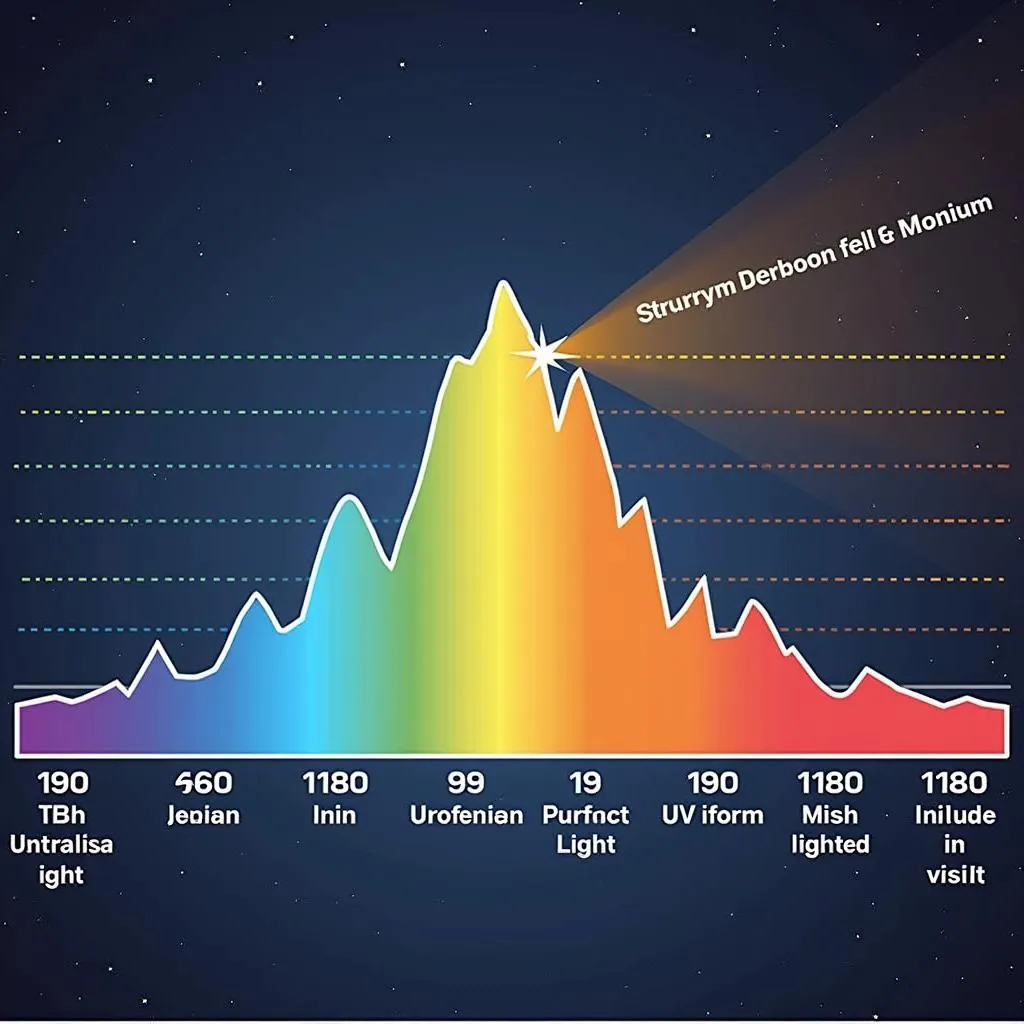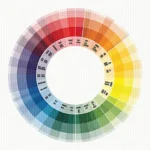A black light, despite its name, doesn’t actually emit black light. It’s a common misconception! Black lights actually emit a type of ultraviolet (UV) light that’s invisible to the human eye. So, if you’re wondering “what color is a black light,” the answer is technically no color – at least not one we can see.
 Black Light Spectrum
Black Light Spectrum
Unseen Light, Visible Effects
While we can’t see the UV light emitted by black lights, we can definitely see its effects. Certain materials possess fluorescent properties, which means they absorb UV light and re-emit it as visible light. This is why objects like white clothes, teeth, and posters treated with fluorescent ink appear to glow under a black light.
Black Lights: Beyond the Party Trick
Black lights have numerous applications beyond making your Halloween decorations pop. They are used in a variety of fields, including:
- Forensics: Detecting bodily fluids, counterfeit money, and fingerprints.
- Entertainment: Creating special effects in nightclubs, amusement parks, and theatrical productions.
- Art authentication: Identifying repairs and forgeries in paintings and sculptures.
- Medical diagnostics: Diagnosing certain skin conditions and infections.
 Black Light in Forensics
Black Light in Forensics
Different Types of UV Light
It’s important to note that there are different types of UV light, categorized by their wavelength. Black lights primarily emit UV-A light, which is the least harmful type of UV radiation. However, prolonged exposure to UV-A light can still be damaging to the skin and eyes.
Safety First When Using Black Lights
- Wear protective eyewear: UV-blocking goggles or glasses are crucial to shield your eyes from potential harm.
- Limit exposure time: Don’t stare directly at a black light for extended periods.
- Choose reputable brands: Ensure your black light is from a trusted manufacturer and meets safety standards.
 Black Light Safety Glasses
Black Light Safety Glasses
Conclusion
While a black light itself doesn’t have a visible color, its ability to reveal hidden fluorescence creates captivating visual effects. Understanding the science behind black lights and their diverse applications opens up a world of possibilities. Remember to prioritize safety when using these fascinating light sources.
FAQs about Black Lights
1. Can a black light damage your eyes?
Prolonged exposure to the UV-A radiation emitted by black lights can potentially harm your eyes, just like excessive sunlight. Always wear protective eyewear when using a black light.
2. Do black lights attract bugs?
Insects are attracted to ultraviolet light, but black lights primarily emit UV-A, which is less appealing to insects than UV-B emitted by the sun.
3. Can I use a black light to charge glow-in-the-dark objects?
Yes, black lights can charge glow-in-the-dark materials that contain phosphors, which absorb UV light and release it slowly as visible light.
4. Where can I buy a black light?
Black lights are readily available online and at various retailers, including electronics stores, party supply stores, and specialty lighting shops.
5. What’s the difference between a black light and a UV flashlight?
While both emit UV light, black lights typically emit primarily UV-A, while UV flashlights may emit different types of UV radiation, including UV-B and UV-C, for specific applications.
Still curious about the world of colors?
Check out our articles on what color is underground and does jade change color to further explore the fascinating realm of colors.
Need help choosing the perfect paint color for your next project? Contact Color Box Hanoi today! Our team of color experts is here to guide you in creating a vibrant and inspiring living space that reflects your unique style. Call us at 0373298888, email us at [email protected], or visit our showroom at 86 Cầu Giấy, Hà Nội. We’re available 24/7 to assist you.

